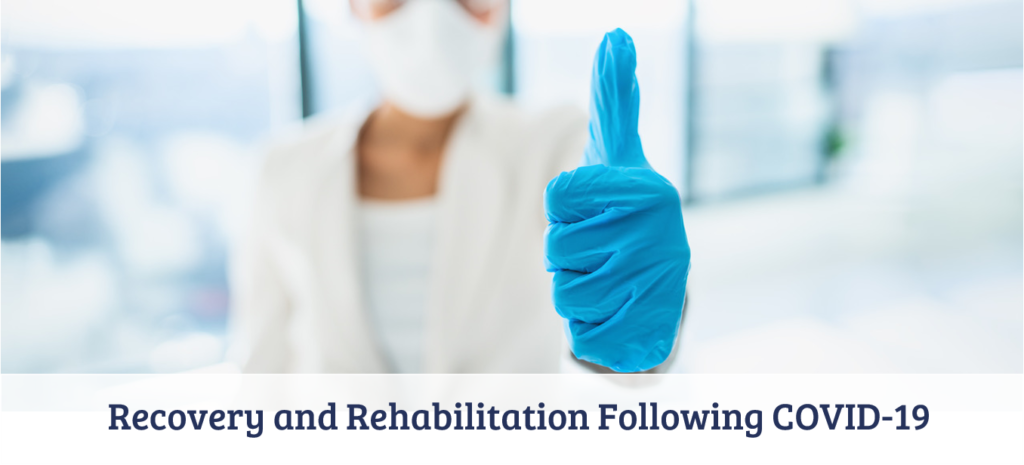
As research and data collection regarding the recovery from COVID-19 grows, valuable information from research studies identifying correlations between contracting the virus and other acute medical complications, as well as the increased risk of readmission to the hospital, is clear. Current data suggests that patients hospitalized for COVID-19 are at increased risk for blood clots, strokes, heart and lung damage, speech and swallowing difficulties due to prolonged intubation, and neurological impairments. It is our job to have a heightened awareness of potential complications associated with COVID-19 and communicate any findings to the interdisciplinary team (IDT). With proper notification of subtle observed symptoms, the IDT can work together to minimize the side effects of COVID-19 and decrease the need for rehospitalization, consequently avoiding delayed recovery, increased potential for exposure to other contagions, and development of further complications.
Recovery is not only needed for those who have survived COVID-19; recovery, although different, is also needed for those who did not contract the virus but find themselves dealing with side effects from the modification of routines and activities in an effort to combat the spread of COVID-19. Current data shows that older adults who have not contracted the virus are seeing physical and psychosocial effects due to social distancing that result in deconditioning, increased effects of chronic disease, and reduced functional capacity. Facilities can provide ways to keep residents active while still maintaining social distancing guidelines. To thwart the effects of isolation and inability to see family, facility staff can provide technology, such as Facetime, to allow for residents to check in with their loved ones. Another consideration would be to reach out to family members and encourage them to send pictures and care packages to brighten the residents’ day. We must ensure minimal impact to those who have made the skilled nursing facility their home by increasing opportunities for social and physical activities while maintaining precautions and social distancing during the COVID-19 pandemic.
COVID-19 has touched everyone, either directly or indirectly, and the effects of the virus may linger for an indefinite amount of time. However, through increased communication among the IDT, we can potentially aid in speeding up the recovery process and in minimizing the risk of rehospitalization. Additionally, through increased social and physical opportunities, our residents who have not contracted COVID-19 can explore alternative ways to stay connected and physically active. Through the actions of a proactive interdisciplinary team, we can assist all our residents in achieving functional and quality outcomes allowing for enhanced quality of life.


